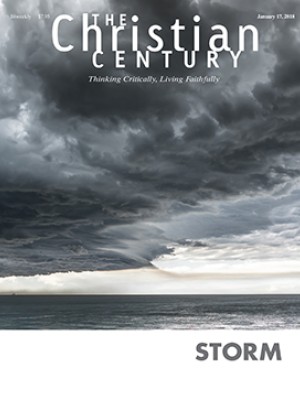February 11, Transfiguration B (Mark 9:2-9)
Strange things are happening on this mountain.
I spent a night last July at the summit of Mount Whitney, the highest mountain in the lower 48 states. Whitney is accessible without technical climbing and ropes. But it’s a grueling hike. I originally planned to sleep at the mountain’s base and make an early morning ascent. I ended up arriving at Whitney midafternoon. I opted to go ahead with the hike instead of waiting. The possibility of photographing both a sunset and a sunrise from the mountain’s apex was too alluring.
It was a glorious sunset. But my night atop Whitney was frigid. I slept in every bit of clothing I had with me, and I never felt entirely warmed. Even summer nights are cold at 14,500 feet.
Dozens of other backpackers joined me for the sunrise. They had awakened at 3 a.m. to hike through the darkness, up the same rugged ascent, to be at the top for dawn’s first light. The sunrise, like the sunset, was phenomenal. We oohed and aahed as the morning sky slowly brightened, painting various hues across the eastern horizon.
Read our latest issue or browse back issues.
From atop a mountain, one sees the world differently. High altitude light does weird things; shadows appear in strange places. And one looks down on birds, clouds, and planes. Mountaintops offer novel perspectives.
In the Bible, tall mountains are the stage for crucial events. Noah lands on Mount Ararat. Abraham nearly kills his son on Mount Moriah. Moses brings down the Ten Commandments from Mount Sinai. Jesus is crucified on Golgotha and ascends from the Mount of Olives. The transfiguration of Jesus occurs on a mountaintop as well.
Without fail, my summit hikes produce exhilaration. My lungs have worked overtime on the ascent, and resting at the top refills my depleted oxygen reservoirs. Over the years, I’ve developed an ascent technique I call “double inhale, single exhale.” It helps me suck in extra oxygen while maintaining a good pace. But at the top my body relaxes, and the oxygen remains in my lungs and body longer. I’m renewed.
My body screams on such climbs. My legs and feet ache, and my back calls out, “Take off this pack!” Sometimes I develop blisters; invariably my clothing is drenched in sweat. A wet body offers a profound sense of satisfaction, though—I think of it like smoke that indicates I’ve burned some big-time body fat.
Hiking tall mountains presents a mental challenge. “What was I thinking?” we climbers ask ourselves. “I should probably turn back,” we say. “I won’t be doing this again anytime soon.” But the summit is worth the ordeal. At the summit, we stand above all else, looking back from where we’ve come. At the top, our confidence runs high. The top provides a new perspective on what has come before. We see our present affairs differently. We enjoy a hiker’s high, motivating us to imagine future climbs.
After hiking a high mountain with Peter, James, and John, Jesus’ clothes turn blazing white. He undergoes metamorphosis. Two heroes of the faith tradition appear, and a voice from an enveloping cloud singles out Jesus as the one they should heed. Peter speaks, suggesting they build commemorative structures. And after these novel events conclude, Jesus asks the disciples to keep it all a secret—until the resurrection.
What are we to make of this transfiguration story? What is Mark telling his readers?
Not a few sermons have been written connecting elements of the story to other parts of the Bible. The connections aren’t always strong ones. Mark’s telling of Jesus’ transfiguration is concise; whereas Matthew and Mark add theological commentary, Mark just hits the essentials. This opens the passage to multiple interpretations and far-reaching extrapolations. Many who expound on the passage do so by drawing ideas from other stories.
The voice in the cloud refers to Jesus as “my son,” and we’re quick to assume the voice belongs to God the Father. But the text doesn’t actually say that. A voice from above also speaks at Jesus’ baptism, and it refers to Jesus as a son as well. But there the visible form is the dove—a symbol of the Holy Spirit, not the Father.
Strange things are happening here. Heroes of the faith come and go. Wild wonders and curiosities abound. Jesus glows. Is this a dream? Is it really happening? What’s the difference, and how would we know?
Does the event foreshadow the resurrection? Is it a confirmation of Jesus as the fulfillment of the law and prophets?
Mark’s Gospel doesn’t clear things up. In fact, the story concludes with Jesus’ request that the disciples keep the transfiguration a secret. Why?
I don’t know. What does come through is the centrality of Jesus. The transfiguration and voice from the cloud endorse and announce Jesus. Pay attention to him! Jesus is the climax, the center, the key. He is the main theme. In this mountain moment, the present connects with the past. There will be a future when we understand better. But what is clear is the present, and the present is a Jesus whose glory commands our attention.
Mountains can bring us to attention. Sometimes we need to be atop a mountain to remember our reason for the journey. Mountains can give us the novel perspective we need to make sense of things; they can renew us. And sometimes only atop a mountain—after a grueling hike, with an aching body, oxygen-starved lungs, and sweat-drenched skin—can we truly hear the voice of wisdom: “This is my beloved son. Listen to him.”






